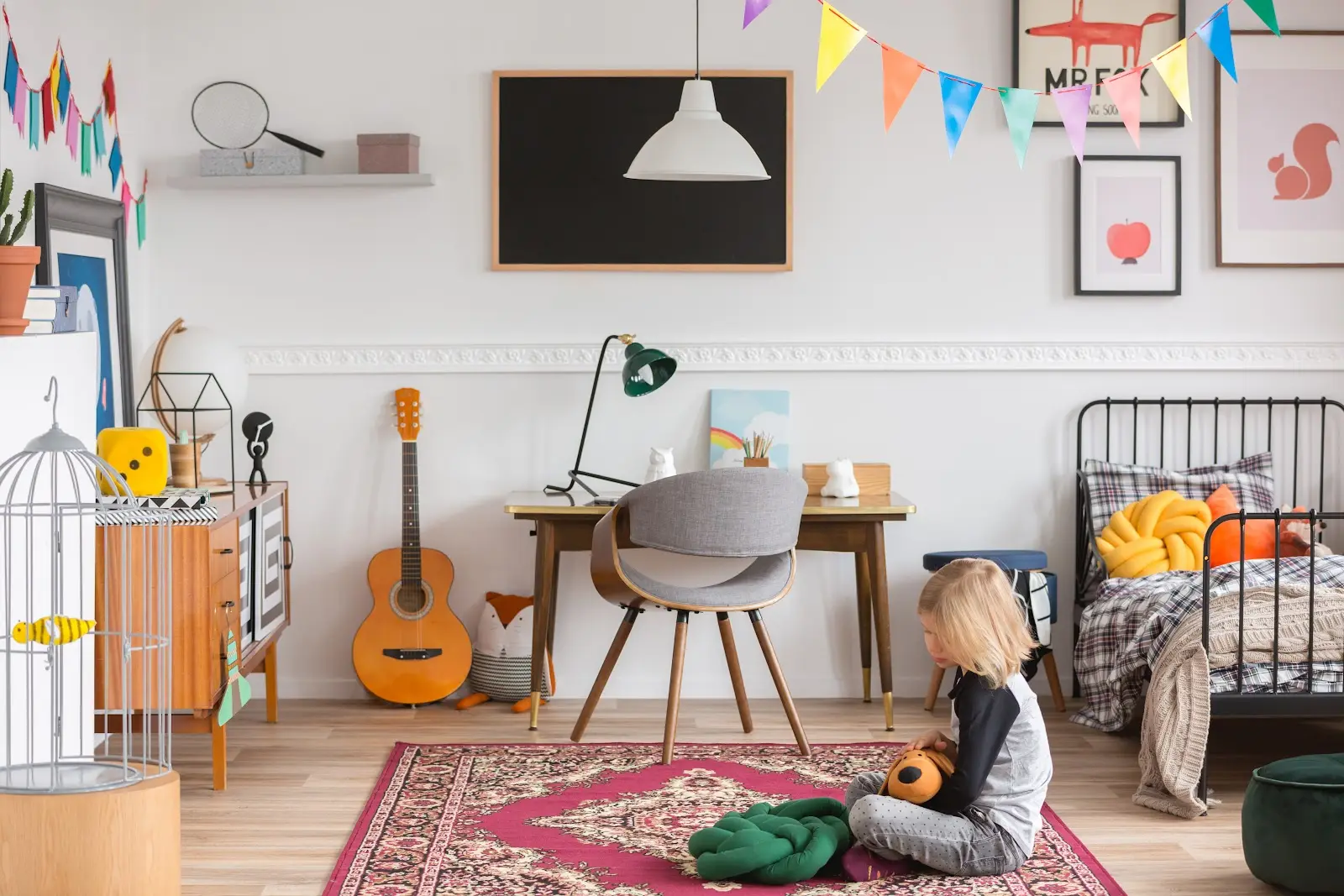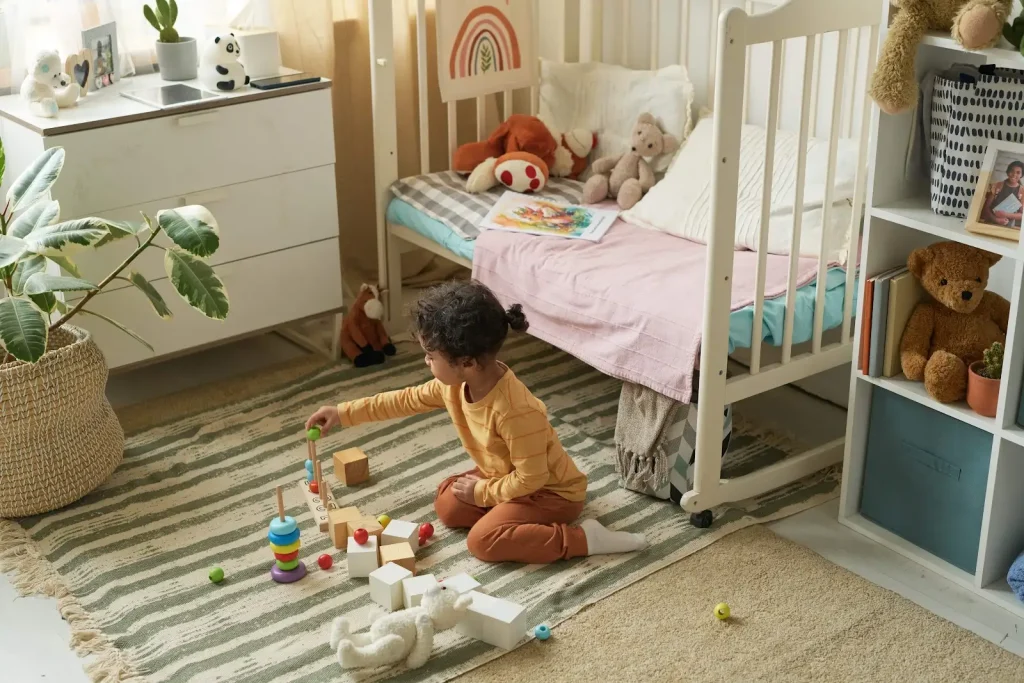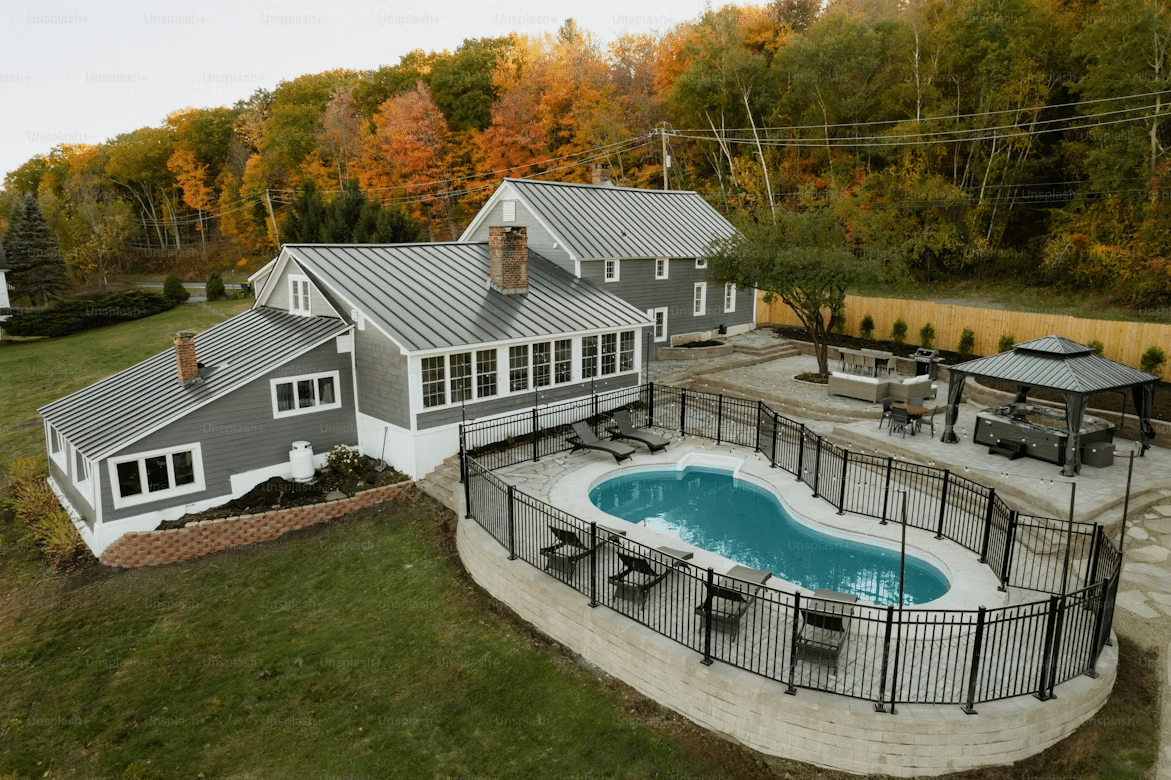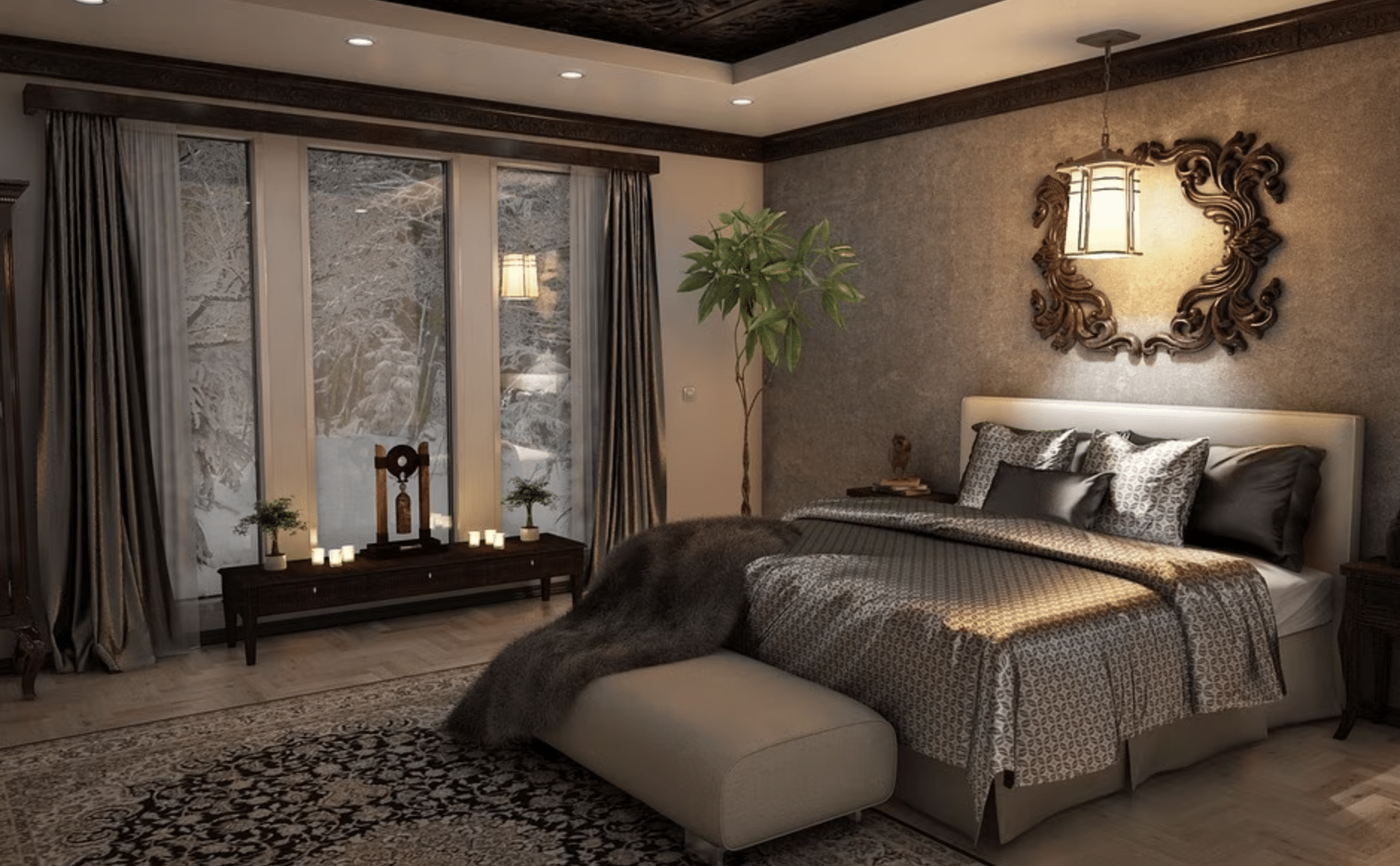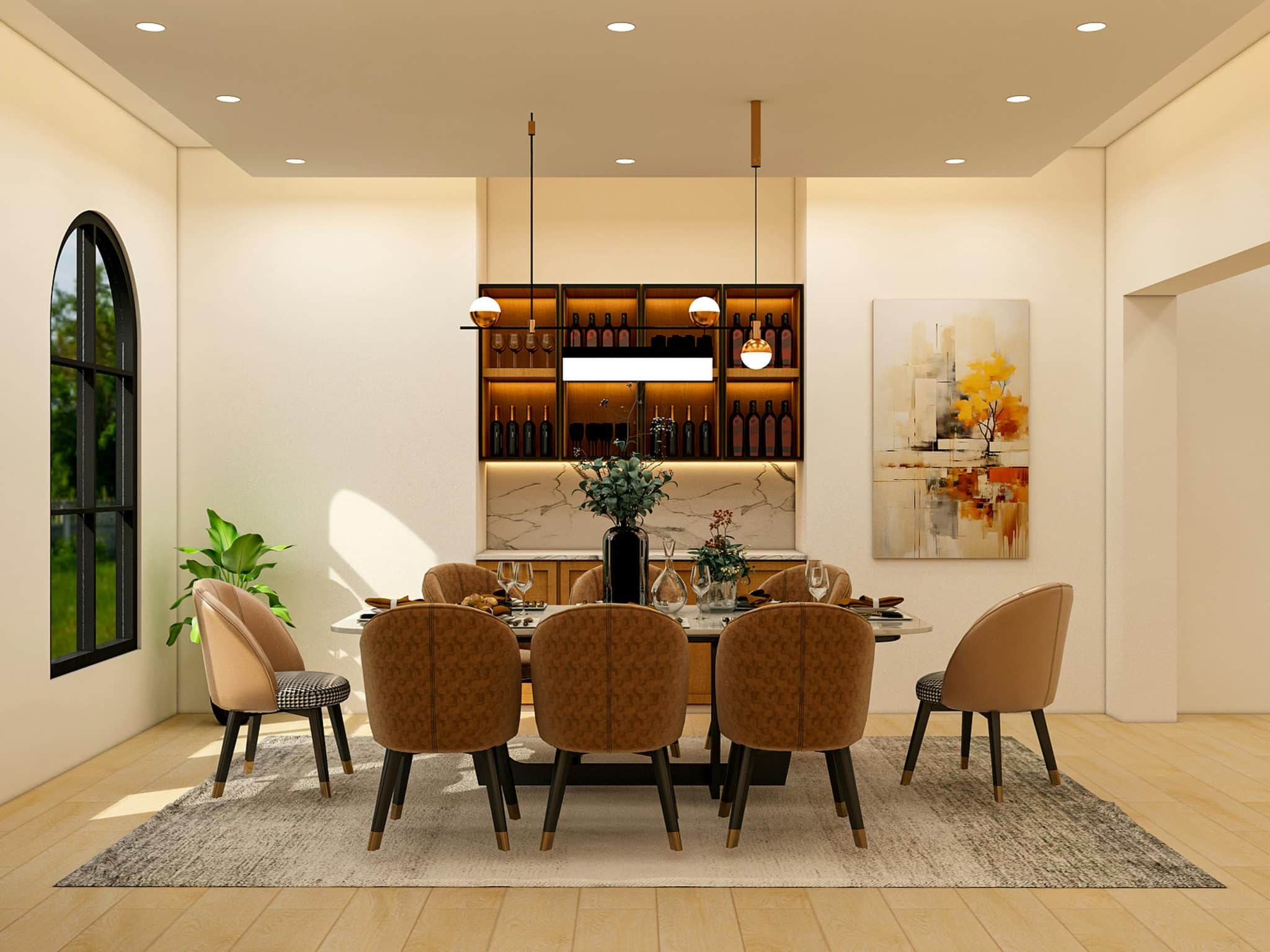Creating a playroom that keeps up with your child’s energy and still offers some calm corners is no easy task. One minute, it’s a racetrack. Next, it’s a quiet retreat, or at least it should be. And trying to balance those needs in a single space? That’s where good zoning makes all the difference.
Dividing a playroom into dedicated zones helps kids understand where each activity belongs. They can run, build, read, and wind down without turning the whole space into a chaotic mess.
So, if your current setup feels like toys are taking over, it might be time to rethink the layout. Here’s how to break it down.
Define the Active Play Zone With Clear Boundaries
Kids need play spaces to move, explore, and get loud. But that kind of energy doesn’t mix well with quiet reading or peaceful downtime. That’s why it’s smart to anchor one section of the room as the “active play” zone.
Use rugs, foam tiles, or shelving units to subtly section off this area. Keep bins or baskets within reach so your child can easily grab their toy collections, building sets, musical instruments, board games, cars, or art supplies. Low shelves help encourage independent play while keeping the area clutter free.
If you’re adding seating here, keep it durable and flexible. Something like a child-safe bean bag furniture works well because it’s soft, easy to move, and perfect for quick breaks between play sessions. Plus, it adds a touch of comfort without getting in the way of the action.
Make sure you’re also thinking about safety. Use furniture that’s low to the ground, anchor anything tall, and avoid pieces with sharp corners. Your child should feel free to play hard without you worrying about injuries.
Create a Cozy, Screen-Free Reading Nook
Every play environment needs a soft, quiet corner where kids can slow down. A dedicated reading zone helps your child enjoy reading books without the distractions of toys or screens. But for it to really work, it needs to feel like its own space, not just an afterthought tucked in a busy room.
Start by choosing a calm, low-traffic spot, ideally away from doors, windows, or the more active play zones. You can define the area using a small canopy, adjustable table, curtains, or even a sideways bookshelf to create a subtle visual barrier. Adding a soft rug or layered floor mats instantly makes the space feel more inviting.
For seating, keep it low and cozy. Floor cushions, bean bags, or a small armchair give kids a place to settle in without overwhelming the space. Natural lighting also makes a big difference here. Stick with warm, indirect light that’s easy on the eyes but still bright enough to read comfortably.
Finally, bring the space to life with books. A small shelf or bin filled with age-appropriate titles is enough to spark curiosity. Rotate books every few weeks to keep interest high. If space is limited, wall-mounted book ledges are a smart way to create a mini-library without sacrificing floor space.
Design a Relax Zone for Winding Down
Even the most energetic playrooms need a calm corner. A relax zone gives your child a dedicated space to pause, whether it’s to process emotions, recharge after school, or simply escape the noise of the day.
You don’t need much square footage to make it work. What matters is how the space feels. Focus on soft textures, gentle colors, and minimal distractions to create a soothing environment. Plush rugs, floor pillows, or even a small hammock can help the area feel noticeably different from the more active parts of the room.
To help your child decompress, include simple calming tools. Sensory toys, fidget items, or a feelings chart can encourage emotional regulation without them having to leave the room. And if your child prefers certain sensory inputs like dim lighting or tactile textures, tailor the space to fit those preferences. It’s all about making the zone feel safe and comforting on their terms.
Use Furniture and Decor To Visually Divide Zones
You don’t need walls to create structure in a playroom. With the right furniture and decor, you can visually define each area (play, read, and relax) without making the space feel cramped or overdesigned.
Start by working with what you already have. Rugs, curtains, open shelving, or even thoughtful color choices can help separate each zone. A bold, patterned rug might mark the active play area, while a more neutral one can set a calmer tone in the reading nook. For the relax space, try an extra-plush texture to create a cozy, sensory contrast.
Furniture can also pull double duty. A small sofa or storage solutions can serve as a visual boundary while keeping the room functional. Open shelving is especially useful as it separates zones while still allowing natural light and sight lines to pass through. Just be sure everything is sturdy and low enough to be safe for kids to use independently.
Key Takeaway
Designing a playroom that balances energy with calm starts with clear, purposeful zones. When each space has a job and the setup supports your child’s needs, everyone benefits. You’ll spend less time cleaning up chaos and more time enjoying the space together. Just remember: the best playrooms don’t have to be perfect. They just have to work for your family.

